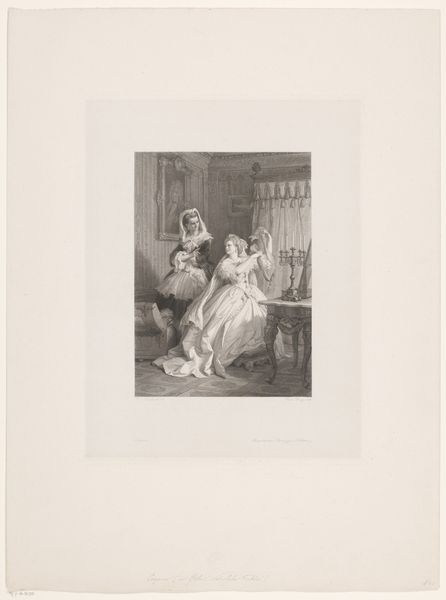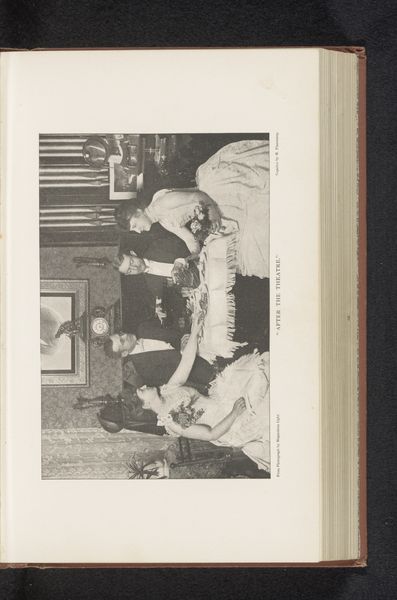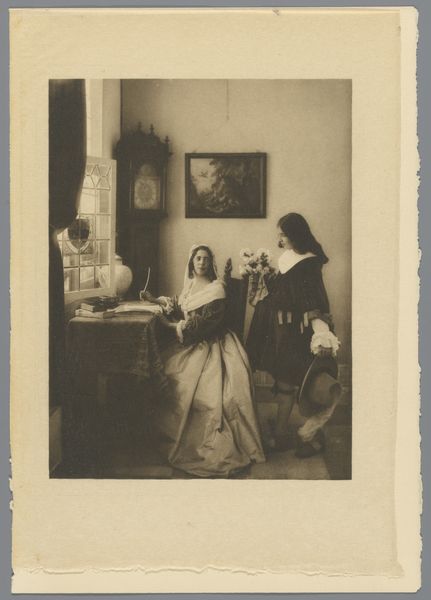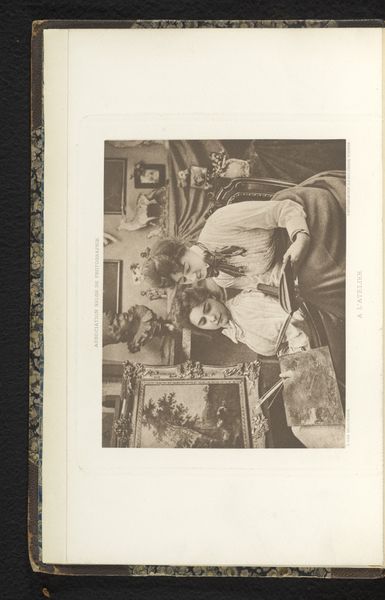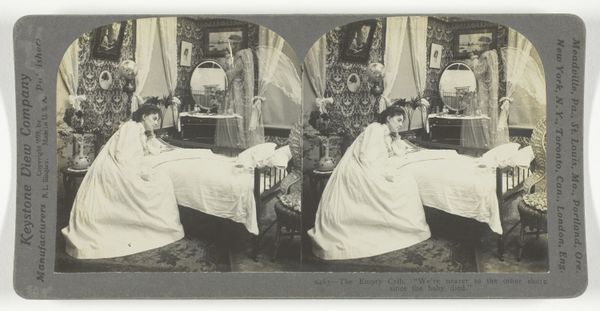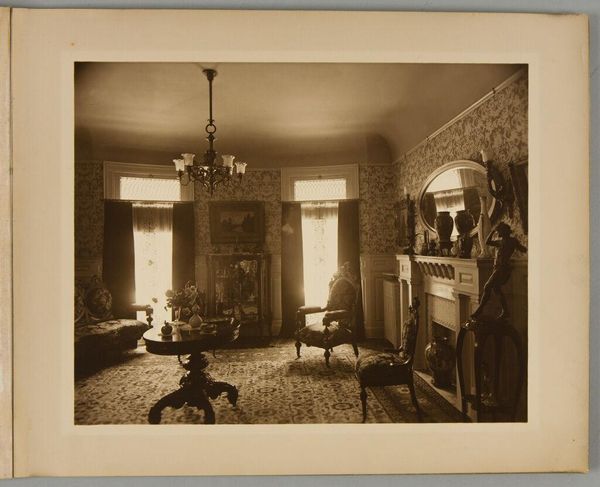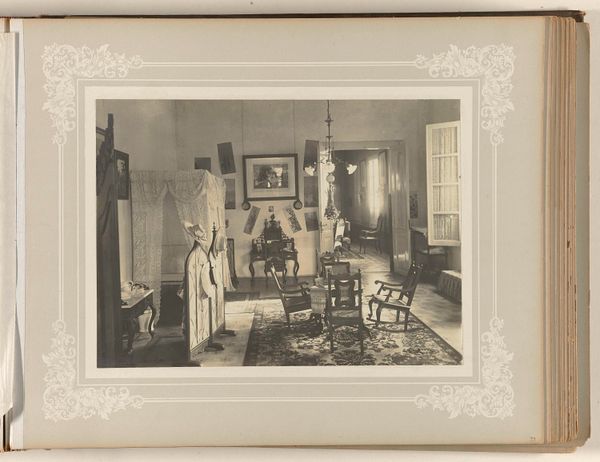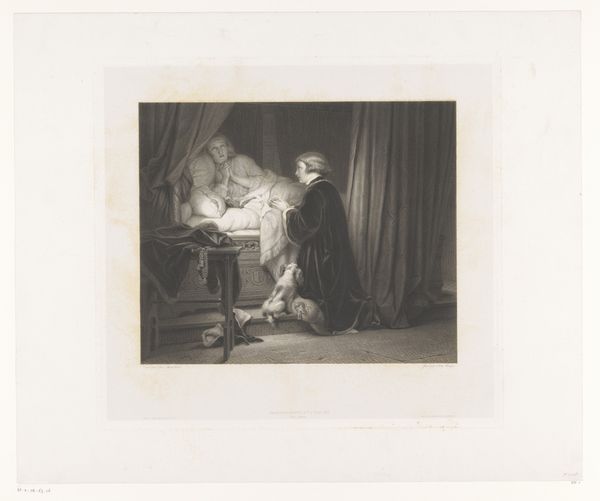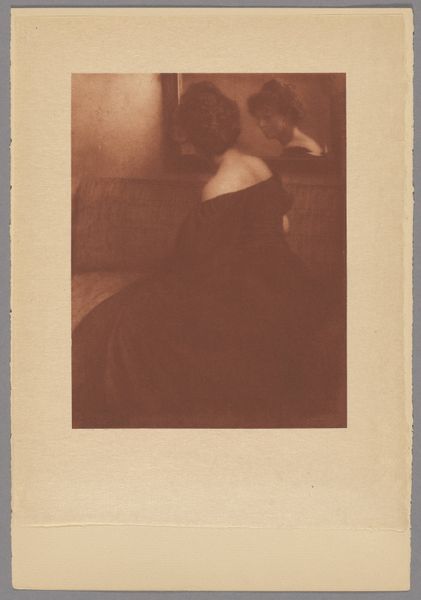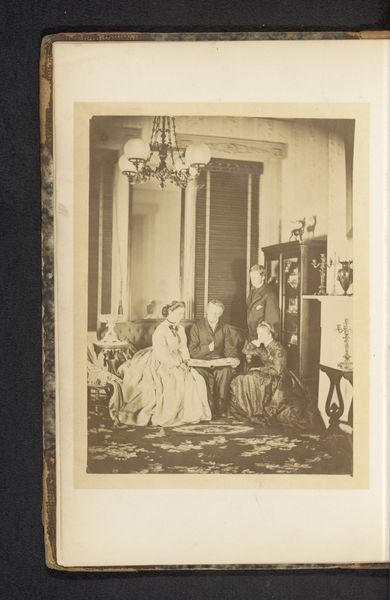
Dimensions: 29.4 x 40.5 cm. (11 9/16 x 15 15/16 in.)
Copyright: Public Domain
Curator: Welcome. We're looking at Edgar Degas' photograph, "Paul Poujaud, Mme. Arthur Fontaine, and Degas," a gelatin silver print taken around 1895. The photograph captures a seemingly candid moment indoors. What are your initial thoughts? Editor: It feels posed, despite its appearance of spontaneity. I'm struck by the contrast between the rather mournful, perhaps bored, figure on the left, and the intense interaction between the other two figures. There's a narrative here, even if we don't know the precise story. Curator: Degas, known primarily as a painter and sculptor, experimented increasingly with photography later in his career. The art world at this moment saw the rise of photography. The subject matter that painters pursued changed dramatically and paintings shifted from portraiture to capturing scenes that appeared less formal and captured leisure, similar to Degas. Photography was a method Degas used to study figures and test compositions before he began painting. Editor: Absolutely, but I think there's something more to it than simply a study. Consider the power dynamics at play. The men, Poujaud and arguably Degas through his implied presence, seem to be vying for Mme. Fontaine's attention. The positioning—the woman seated, the men leaning in—suggests a specific kind of social positioning common in that period. Curator: Degas' work often depicts women in unconventional poses and unguarded moments, like we see here with Mme. Fontaine who looks tired. He sought to capture realism. Do you view his focus as respectful to his sitters, or exploitative? This is a common issue raised concerning his ballet paintings and sculpture, too. Editor: I see it as a bit of both, honestly. There's an undeniable voyeuristic quality. His art certainly wasn't apolitical. Degas’ work reflects an attitude toward women as objects. Also, how do we view photographs taken in domestic settings by a male artist from today's perspective when debates of privacy and patriarchy remain pertinent? Curator: Those debates feel important to continue examining today as they speak to issues in representation of our own time. Beyond these discussions, though, what's striking about this photograph technically? Editor: I’m drawn to how Degas used the artificial light indoors, particularly its effects on the mirror's reflection. The focus isn't uniformly sharp. It enhances the dreamlike, slightly unsettling atmosphere, almost as if we’re peering into a private, fleeting moment. Curator: Degas played with the developing technology available. The image is grainy, which he probably welcomed since it blurred edges and made lines appear softer, just as they do in impressionist paintings. Thanks for sharing your perspective on this photograph and bringing social power dynamics into our understanding. Editor: It’s been my pleasure. Analyzing art with a keen eye on historical context—who benefits, who is excluded—always enriches the experience for me.
Comments
No comments
Be the first to comment and join the conversation on the ultimate creative platform.

